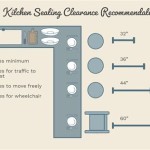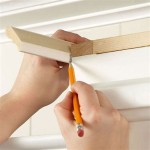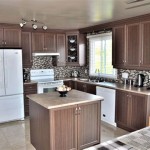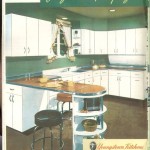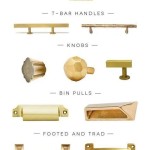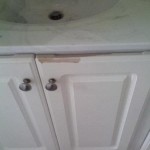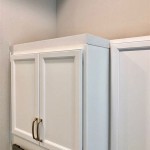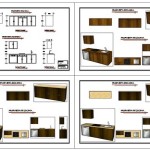Kitchen Cabinets From the 80s: A Retrospective Look
The 1980s witnessed a distinct style revolution in interior design, and kitchen cabinets were no exception. Characterized by specific materials, colors, and construction techniques, kitchen cabinets of this era offer a unique glimpse into the aesthetic preferences and technological capabilities of the time. Understanding the defining features of these cabinets is crucial for homeowners looking to renovate, remodel, or simply appreciate the design trends that shaped a decade.
Kitchen design in the 1980s reflected a move away from the earth tones and natural wood finishes that dominated the 1970s. While some natural elements persisted, the decade saw the introduction of bolder colors, more synthetic materials, and a focus on functionality alongside visual appeal. Examining the materials, styles, and hardware common during this period reveals the core characteristics of 1980s kitchen cabinetry.
Dominant Materials and Finishes
One of the most defining aspects of 1980s kitchen cabinets was the prevalence of laminate. Laminate, often applied to particleboard or MDF (Medium-Density Fiberboard), offered a cost-effective and durable alternative to solid wood. It allowed for a wider range of colors and patterns to be incorporated into kitchen design, from solid block colors to simulated wood grains. The glossy finish of laminate was particularly popular, contributing to the sleek, modern look that many homeowners desired.
Oak, however, remained a popular choice, particularly in higher-end kitchens. Unlike the darker stains favored in previous decades, 1980s oak cabinets were often finished with a lighter, honey-toned stain. This lighter stain allowed the natural grain of the wood to show through, providing a warmer counterpoint to the cooler tones and synthetic materials that were gaining traction. This use of oak highlights a transitional period in kitchen design, where natural elements were being reinterpreted to fit the evolving aesthetic.
Another material gaining traction was melamine, another type of manufactured wood product coated with a durable, heat-resistant plastic. Melamine cabinets were typically less expensive than laminate and offered a similar level of durability and ease of cleaning. The edges of melamine cabinets, however, were sometimes susceptible to chipping or peeling, a common sign of cabinets from this era.
The use of veneer also played a role, often applied to cabinet doors to create a more upscale look without the expense of solid wood. Veneer allowed for the use of exotic wood grains and intricate patterns, providing a way to add visual interest and sophistication to the kitchen. The longevity of veneer cabinets, however, depended heavily on the quality of the adhesive and the care taken in their installation and maintenance.
Popular Styles and Designs
The style of kitchen cabinets in the 1980s varied, but several key trends emerged. Slab doors, characterized by their flat, minimalist design, were a popular choice for modern kitchens. These doors typically featured a simple edge profile and were often finished with laminate or melamine. Slab doors emphasized clean lines and a streamlined look, reflecting a shift towards a more contemporary aesthetic.
Raised-panel doors, offering a more traditional look, also remained prevalent. However, the style of raised panels evolved from the ornate designs of previous decades to simpler, more streamlined profiles. Arched-top doors, often featuring a subtle curve at the top, were a common variation, especially in oak cabinets. These details softened the overall look of the kitchen and provided a touch of elegance.
Another popular design feature was the incorporation of glass-fronted cabinets. These cabinets, often used to display decorative items or fine china, added visual interest and a sense of openness to the kitchen. The glass was typically clear or frosted, and the cabinet doors were often framed with wood or laminate that matched the rest of the cabinetry. The use of glass reflected a desire for both functionality and visual appeal.
The layout of 1980s kitchens often featured a combination of wall cabinets, base cabinets, and islands. Wall cabinets were typically mounted above the countertops, providing storage space for dishes, glasses, and other kitchen essentials. Base cabinets, located below the countertops, offered space for larger items such as pots, pans, and appliances. Islands, which became increasingly popular during this decade, provided additional workspace and storage, as well as a central gathering point for the family.
Hardware and Accessories
The hardware used on kitchen cabinets in the 1980s reflected the overall design trends of the decade. Chrome and brass were common finishes, offering a touch of shine and sophistication. Pulls and knobs were typically simple and functional, with clean lines and minimal ornamentation. The use of recessed pulls, which were flush with the cabinet door, further emphasized the streamlined look of modern kitchens.
Self-closing hinges, a relatively new innovation at the time, began to appear in higher-end kitchens. These hinges allowed cabinet doors to close smoothly and quietly, adding a touch of luxury and convenience. European-style hinges, also known as concealed hinges, became increasingly popular, providing a cleaner look by hiding the hinges from view.
Accessories such as pull-out shelves and lazy Susans were also incorporated into kitchen cabinets to improve organization and accessibility. These features maximized storage space and made it easier to reach items stored in the back of cabinets. The focus on functionality reflected a growing awareness of the importance of efficient kitchen design.
Color schemes frequently incorporated in 1980s kitchens included pastels, such as light pink, blue, and yellow, often paired with white or off-white cabinets. These colors created a bright and cheerful atmosphere. Conversely, bold colors like teal, mauve, and black were used to create a more dramatic and contemporary look. Often, these darker shades were paired with lighter cabinetry to create contrast and visual interest.
The lighting in 1980s kitchens often complemented the cabinet design. Fluorescent lighting, both under-cabinet and overhead, was commonly used to provide bright and even illumination. Track lighting, which allowed for adjustable and directional light, was also a popular choice. The goal was to create a well-lit and functional workspace.
Countertop materials during this period included laminate, tile, and solid surface materials like Corian. Laminate countertops, often chosen to match the cabinet finish, were a cost-effective and durable option. Tile countertops, while more labor-intensive to install, offered a wide range of colors and patterns. Solid surface materials, which were relatively new to the market, provided a seamless and hygienic surface.
Flooring options in 1980s kitchens included vinyl, tile, and linoleum. Vinyl flooring, which was affordable and easy to clean, was a popular choice for many homeowners. Tile flooring, while more expensive, offered a durable and stylish option. Linoleum, a natural and sustainable material, was also used in some kitchens.
The appliances of the 1980s often coordinated with the cabinet design. White, black, and almond were common appliance colors. Built-in appliances, such as dishwashers and refrigerators, were increasingly popular, creating a more seamless and integrated look. These appliances were often designed to match the style and finish of the cabinetry.
Overall, kitchen cabinets from the 1980s represent a distinct chapter in interior design history. The materials, styles, and hardware used during this period reflect the aesthetic preferences and technological capabilities of the time. By understanding the defining features of these cabinets, homeowners can better appreciate the design trends that shaped a decade and make informed decisions about renovating, remodeling, or preserving their 1980s kitchens.

80s Kitchen Update Reveal The Handyman S Daughter

80s Kitchen Update Reveal Laminate Cabinets Diy Makeover

Before After Yn S Yucky 1980s Kitchen Hooked On Houses

80s Kitchen Update Reveal Laminate Cabinets Diy Renovation

Get Your Kitchen Out Of The 80s Remodeling

Susan Transforms Her 1980s Kitchen For 600 Retro Renovation

Painting My 80s Style Kitchen Cabinets

How To Update An 80 S Kitchen On A Budget Superior Construction And Design Llc

Updating My 1980s Kitchen Hometalk

How To Paint Ugly Oak Strip Cabinetry The Sweetest Digs
Related Posts

